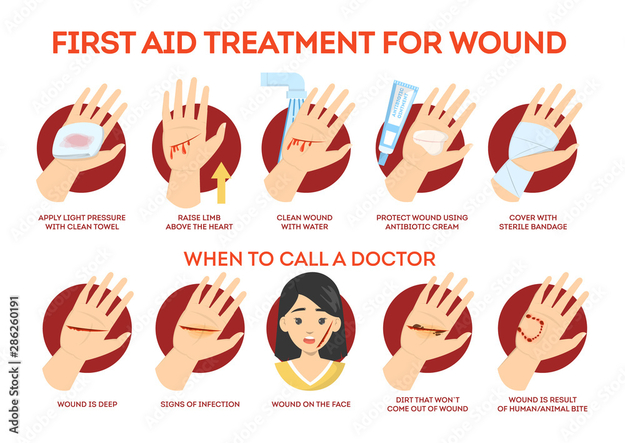When to send someone to the doctor/hospital:
- If the wound is deep and/or the bleeding is not controlled by consistent pressure
- If the wound is from an animal or human bite
- If the participants has certain conditions such as diabetes
- The wound is already infected or if there is a high risk of it getting infected
- Bleeding from an artery
- The participants has trouble moving body parts
- Severe cut to the face
Minor Cuts and Scrapes:
- Wash your hands. This helps avoid infection.
- Stop the bleeding. Minor cuts and scrapes usually stop bleeding on their own. If needed, apply gentle pressure with a clean bandage or cloth and elevate the wound until bleeding stops.
- Clean the wound. Rinse the wound with water. Keeping the wound under running tap water will reduce the risk of infection. Wash around the wound with soap. But don't get soap in the wound. And don't use hydrogen peroxide or iodine, which can be irritating. Remove any dirt or debris with tweezers cleaned with alcohol. See a doctor if you can't remove all debris.
- Apply an antibiotic or petroleum jelly. Apply a thin layer of an antibiotic ointment or petroleum jelly to keep the surface moist and help prevent scarring. Certain ingredients in some ointments can cause a mild rash in some people. If a rash appears, stop using the ointment.
- Cover the wound. Apply a bandage, rolled gauze or gauze held in place with paper tape. Covering the wound keeps it clean. If the injury is just a minor scrape or scratch, leave it uncovered.

